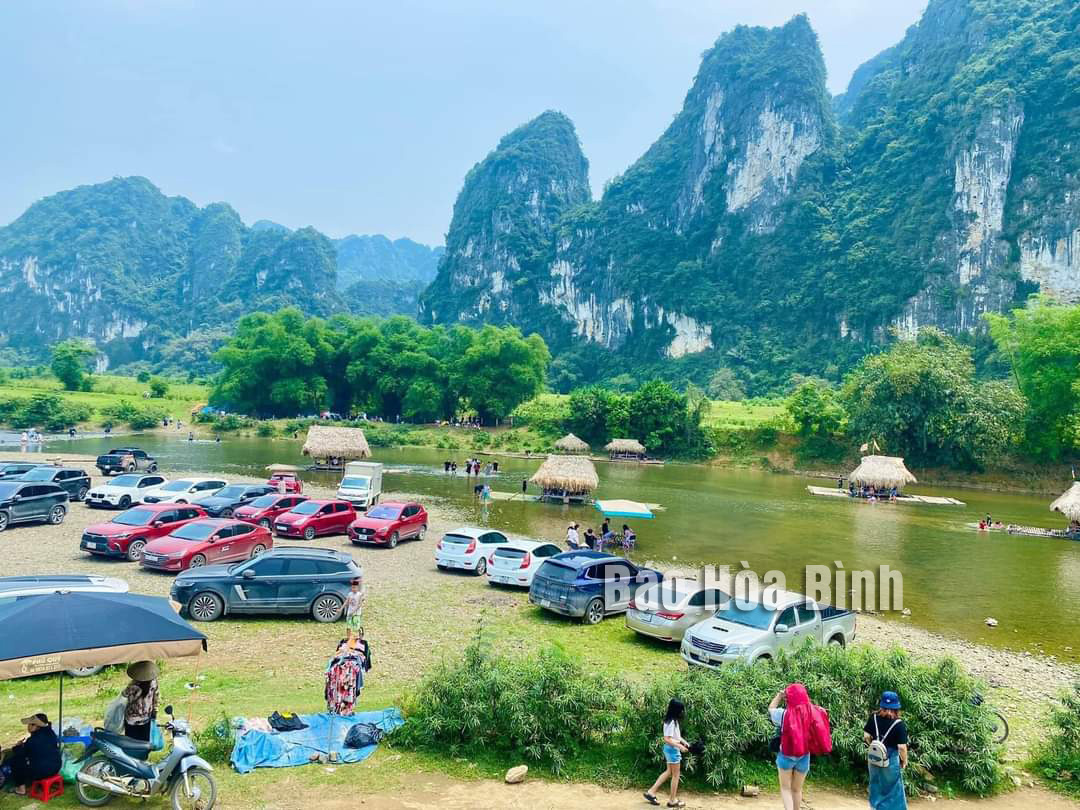Kim Boi district, identified as a key zone of tourism, urban, and service development, has been coordinating with relevant sectors and units to carry out various measures on planning, investment attraction, tourism product development, and brand building to maximise its distinctive tourism potential and advantages.
Na Bo tourist site in Sao Bay
commune, Kim Boi district, attracts plenty of visitors.
Over the past years, Kim Boi has recorded
vibrant tourism activities with many investment projects now being studied and
implemented. Work has started on some new projects and tourism establishments
been upgraded and provided high-quality products for visitors.
Thanks to stronger investment, such places as
Serena Resort in Sao hamlet of Sao Bay commune and the Ha Binh hot mineral
spring resort in Bo town have enjoyed good growth in the tourist number and
revenue. Besides, some community-based tourism sites connected with local
landscapes and culture have also come into being, drawing a large number of
travellers from far and wide.
Holding great opportunities for tourism and
service development, over recent years, Kim Boi has enhanced the management
over tourism and taken actions to boost tourism. In particular, it has stepped
up the introduction of local potential and advantages while creating the best
possible conditions for businesses, organisations, and individuals to conduct
surveys and register tourism investments.
Nguyen Vu Hoa, head of the district’s culture
and information division, said that since the start of 2024, Kim Boi has
organised many activities to popularise local potential and advantages to
attract tourism investment. It held a meeting with authorities of Sao Bay
commune to discuss the management of tourism services in riverside areas, and
also issued guidance for the establishment of two tourism cooperatives.
The district is currently home to 53
accommodation facilities, including six resorts and hotels together with 47
hostels, providing 869 rooms and 1,077 beds. Meanwhile, 1,500 people are
working in the tourism sector, including 450 directly at tourism service
establishments and the remainders indirect and seasonal workhands. During the first half of 2024, Kim Boi welcomed
more than 325,000 tourist arrivals and earned about 375 billion VND (15 million
USD) in tourism revenue.
However, the district admitted that both the
number and diversity of local tourism products remain limited while it still
lacks entertainment and shopping places to keep travellers to stay here longer
and spend more.
With a view to capitalising on its potential and
advantages and building a brand for local tourism, Kim Boi has strengthened
state management, coordinated with relevant agencies and sectors to improve the
investment and business environment, while supporting and assisting capable
businesses to make tourism investments. In particular, it has properly carried
out site clearance for key projects, including roads linking the district with
other localities and ecotourism complexes in Cuoi Ha commune, so that they
could be opened soon.
The district is also calling for investment to
the projects meeting at least three-star standards, strongly developing
community-based tourism, giving support to investments in cultural, ecological,
relaxation, sports and entertainment tourism, and fostering partnerships with
relevant parties to design new eco-tourism products linked with the culture of
local ethnic groups.



